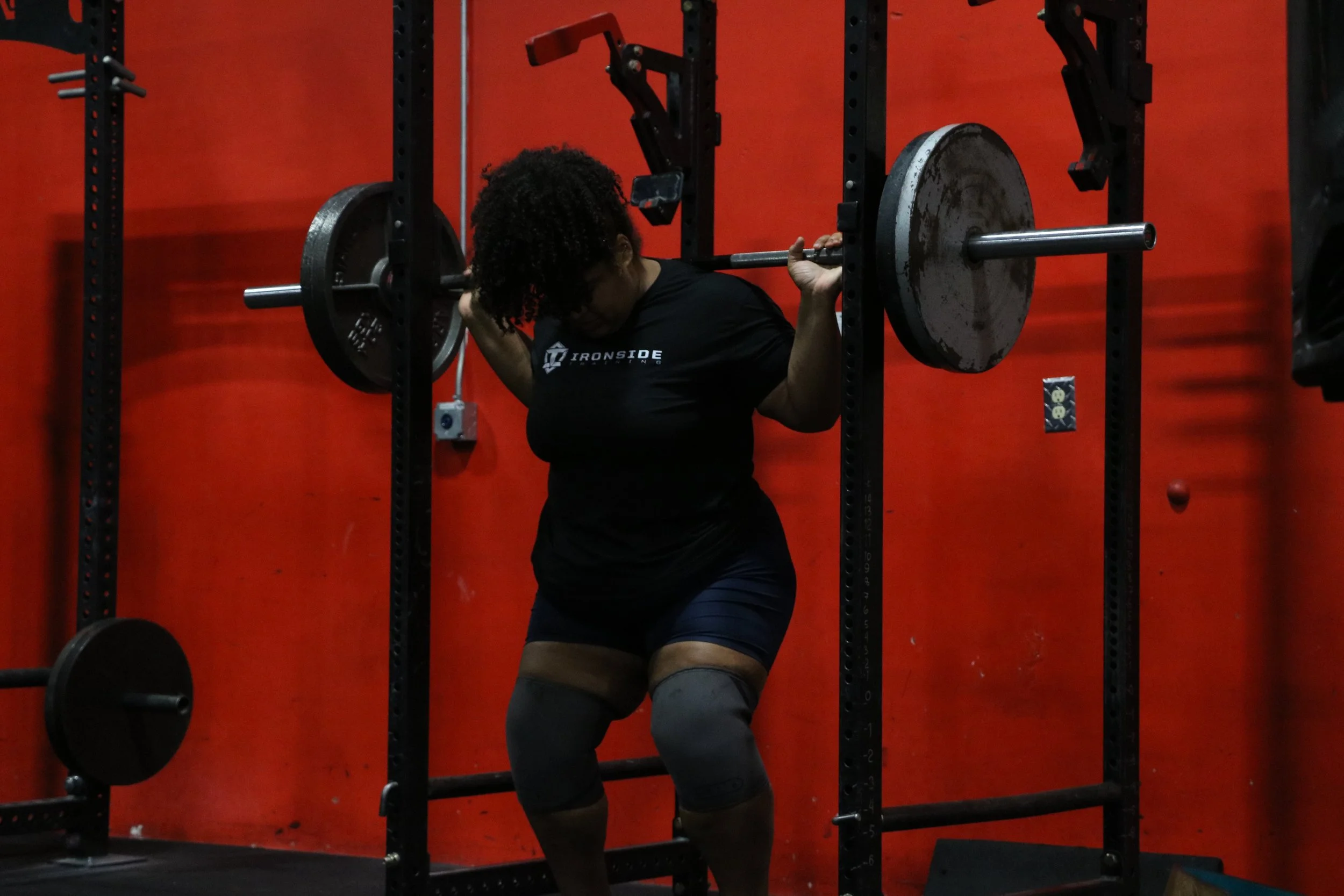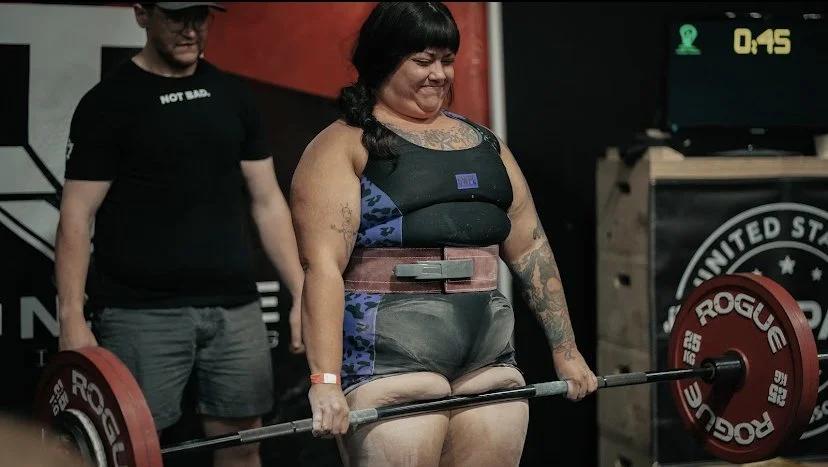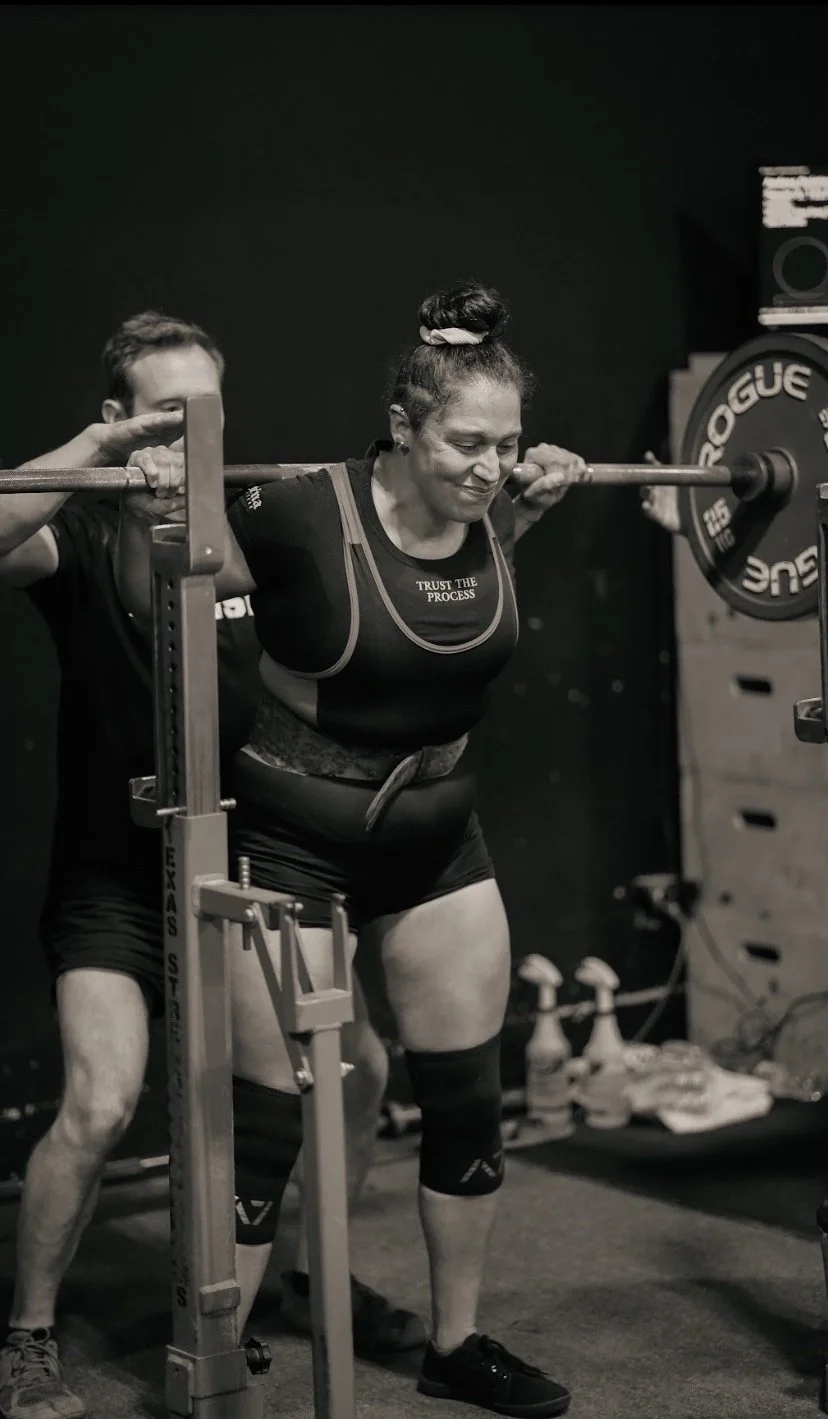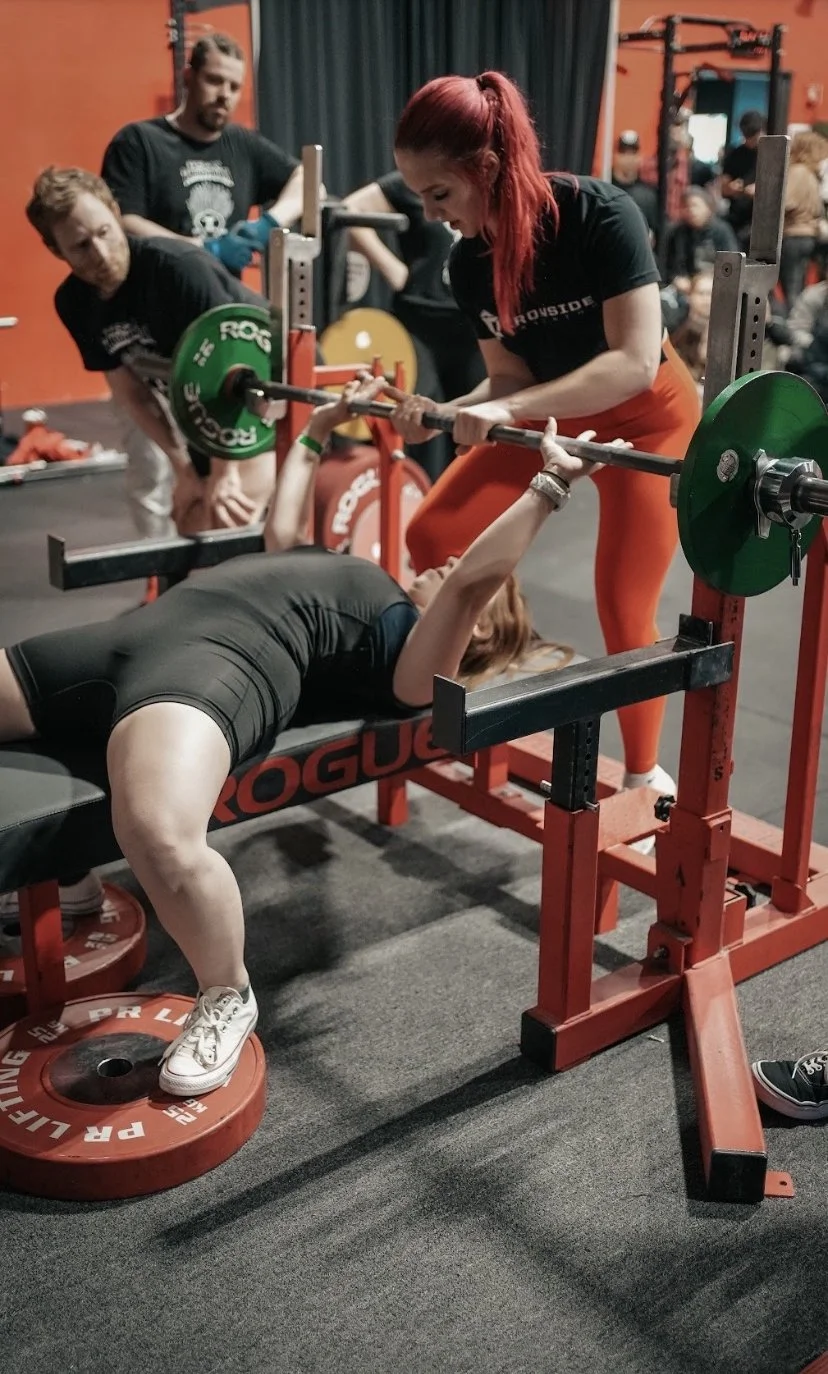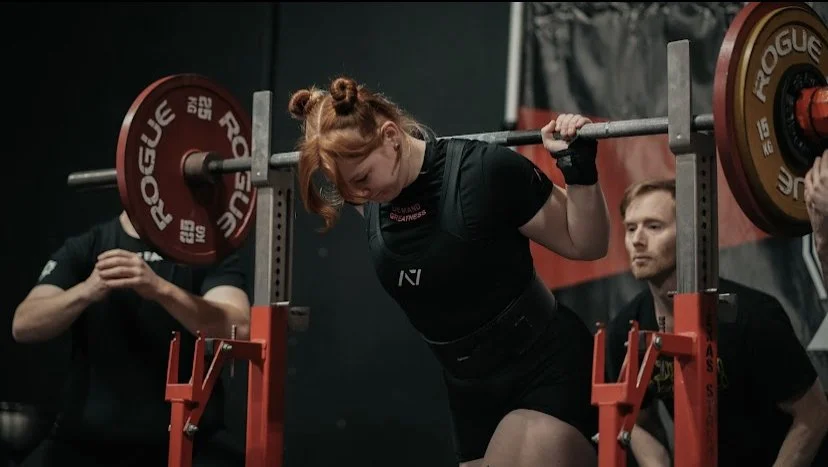Specificity: a Powerlifting Programming Principle
“Specificity” is a word commonly used regarding programming for Powerlifting- as it plays a crucial role in your performance over time, especially when you advance as an athlete. Our sport is so controlled that we can predict almost the exact circumstances we’ll undergo in a meet. We know what those events entail, with the ability to practice them consistently leading up, and can control many variables that precede the big day to help ensure our success. With this being the case, you want to take advantage of that as much as possible. You can manipulate your training variables to the minutia, hoping to elicit a certain response.
Specificity refers to how closely your training replicates the condition of your sport- and there are a few factors that, in regards to Powerlifting, fall under this category. Let’s dive into the principle itself, when & where it makes the most sense, and how to program with it in mind.
The importance of specificity- and continuum over time
Specificity's purpose is to prepare you to perform well in your sport. This isn’t simply on a psychological level (so that you know the movements you’re doing), it’s to evoke the stimulus you need, on a physical & neuromuscular level, to produce those qualities on meet day. What are these necessary aspects, you may ask?
Powerlifting is a sport of maximal strength in the squat, bench press, and deadlift. Specificity refers to everything, from the amount of weight lifted, how heavy it feels, how long your rest periods are, the technique you apply to the lift, and how many reps you’re performing. In the context of a Powerlifting competition, this looks like:
lifting hefty weights that will often feel quite challenging,
Three singular reps with long rest periods for each event,
under the standards of competition rules,
with either a power/squat/deadlift bar for each.
You must be prepared to execute these qualities- with the learned motor pattern of every movement and its technique- so it feels second nature, from:
The confidence in doing so,
The physical ability to grind through max-effort lifts while holding technique,
The adaptations to support your tendons/ligaments under significant load,
The “peak” in your strength capacity,
The recovery time to perform multiple heavy lifts in a singular period, etc.
Those are the physical adaptations necessary for Powerlifting, and the entire goal of your training is to create them.
Variation
To complicate things, you also cannot only train the heavy, maximal Power Lifts year-round, with longevity in mind. While it’s necessary to practice what you’ll be doing in competition, other modalities matter, too, and will help you express the ones you’re ultimately trying to drive forward- in the long run. Introducing variation ensures that staleness doesn’t occur- so you can keep progressing- and build your base into a more well-rounded one.
The specificity-variation continuum refers to, on a spectrum, how close/far your training is from the qualities of competition. When meet day approaches, your training should be far more specific- to peak you for the conditions you’ll need more readily.
When competition is far away, your training can take on more variety, you have plenty of time to address your meet-day needs, and you should utilize this period to emphasize other ones.
Training Age
Beyond proximity to competition, how advanced you are will also determine your specificity needs. Beginner athletes are not at risk of stagnation, as they haven’t reached (even close to) their peak yet and will progress on damn near anything. This training period (initial 6-12 months) should emphasize the main lifts with basic set/rep progressions, to build technique, confidence, and work capacity- all modalities that will create the best foundation possible. As an athlete becomes more intermediate/advanced, with years in this sport, individual strength deficits/weaknesses may arise, plateaus may occur, and training variation can be introduced on a greater level- to address these.
Specificity is one of the most fundamental training principles, but it can be overapplied, too: causing you to be a one-dimensional, limited, even plateaued athlete. There are extremes on either end: and while we generally want to fall more on that specific side for Raw Powerlifting- you also need to change things up a bit- from time to time.
2. Lift Variation Options
Exercise Selection
One component of specificity is exercise selection. Under this category, the range of motion, bar used, strength curve, setup, etc. all fall into the exercise modality. The more aspects you change- the further away from competition-standard you’ll get.
When closer to a meet (~4-8 weeks out), changing only one of these components (if any at all) is recommended. This rule helps preserve the specificity principle. Further out, you can get away with maybe two, or even one aspect of exercise selection, paired with another below. I don’t recommend more than two alterations to the same exercise as a general rule- you’re getting into completely different territory than what you’re trying to develop in the end.
Here’s what we’re looking at for each lift & possible differences:
A) Range of motion
For squats, this looks like reaching below parallel and standing all the way up.
For bench, the bar touches your chest, and you fully lock it out.
For deadlifts, you pull from the floor & fully lock it out.
Reduced range-of-motion exercises (block pulls/board presses/pin or box squats) can be used as overload tools (allowing you to lift more weight) or in a rehab setting- if a part of the movement feels more painful. You can also increase the range of motion, like deeper squats or Deficit deadlifts- which I find more useful for raw Powerlifting, as our general weaknesses tend to lie at the lower portions of the movement when we’re working against gravity.
Since we tend to fail at the bottom, increasing where that is can be an effective strength (and even mobility) training tool.
B) Bar used
For squats, lifters will use either a squat or power bar (depending on federation).
For bench presses, a power bar is used.
For deadlifts, depending on federation, either a power bar or deadlift bar is used.
Many specialty bars exist- from SSB (squats), Cambered Bar (squats/bench), Duffalo bar (squats/bench), Kadillac or Swiss bar (bench), and Trap Bar (deadlifts). While specialty bars can serve a purpose in training (info on that here), they are far from specific- and less important for Raw powerlifters (especially beginners). You can use these bars closer to the meet (with a given purpose), but they may be better as a post-meet training tool- further in your career.
C) Strength curve
A distinct component of Raw Powerlifting, specifically, is that the lift is generally most difficult at the bottom portion- when you’re working hardest against gravity. You don’t have the added assistance of gear/suits to help you through these ranges of motion, and you’re relying solely on your muscular strength and anatomy to assist you.
Squats: generally most difficult out of the hole,
Bench: off the chest,
Deadlifts: off the floor (sumo) or off the floor/below the knees (Conventional)-
Technique also plays a role in where the least efficient portion is, a factor worth considering.
Accommodating resistance (bands/chains) can change this in the raw lifts- where the tension increases at toward the mid-range/top of the movement, to alter the strength curve (acceleration/difficulty during each part of the rep). Similarly to specialty bars, these tools can have their time and place- specifically if an athlete has a noticeable weakness, say, at lockout- but their necessity is rarer in raw athletes. Moreover, they are a significant alteration from the competition lifts, so putting them too close to a meet can violate the needs of specificity-there are no bands/chains in competition.
D) Setup
Where you orient your body during the lift is also considered a variation. Simply changing the width/degree of your foot can change the mechanics- and thus- the stimulus you obtain.
This genre is vague, but here are some examples:
For squats, a wider or closer stance can vary your competition lift- possibly altering the ROM/muscles used/etc. Also, high bar vs. low bar are two different movements- and including both can be helpful training tools.
For bench press, this could be a Legolas (no-legs) variation, removing the leg drive component and isolating your upper body. A closer or wider grip changes the bar path, touchpoint, shoulder position, and muscles trained during your bench press reps. For that reason, it’s one of my favorite variations- it can help address weaknesses in a simple matter. Again, near meet day, competition grip should be trained as much as possible, but this can be a solid variation in many phases, even for beginners.
For deadlifts, your opposite stance is a widely different lift, training different movement patterns & muscle groups. Closer to a meet, you want as much practice with your typical setup as possible.
-
Of course, there are other ways to vary exercise selection than those listed here, but these are some primary ones. Exercise selection is generally the first factor one goes to, in altering specificity, as it's a very straightforward change. However, it’s easily possible to get too far away from the competition movements, specifically when that should be the training priority.
Some changes are more or less specific than others- so use discretion when assessing your needs, and start with the basics/closer-to-comp lifts first.
Other Programming Variables
Set/Rep Ranges
Powerlifting characterizes maximal intensity, which means minimal volume. You cannot perform a high rep count at 95-100%. Without changing exercise selection, high-volume training differs from the nature of competition, yet has many benefits to Powerlifting within a given application.
Volume helps build up your training base. It enhances work capacity, technical proficiency/endurance, hypertrophy, and recovery time. These qualities contribute to long-term strength development- but do not train specific strength needs- within themselves. Therefore, it would not make sense to include excessive volume when meet day is approaching. Maximal strength is a special skill- and one that volume de-trains you from, as these adaptations are different. Outside of a peaking/testing/meet prep setting, this is not as much of a concern.
Note that the higher rep that you get, the less specific you also get. Sets of 15-20 require a far lower % than your sport does- and won’t necessarily have as much carryover. Generally, sets of 3-5 are very effective at building strength, and anything between 5-8 is sensical when the goal is volume, with a couple of higher-rep dosages thrown in. 4-6 sets generally cover all of your needs.
I would consider higher-volume, less specific (but still productive) work between ~4-6 sets of 5-8 reps (lower sets for higher reps, and vice versa).
Building your volume reps makes sense: after a meet, when further out from a meet, as a beginner, etc., during many phases- just not when close to a meet/testing phase.
Intensity
Intensity goes hand-in-hand with volume, as they have an inverse relationship. When intensity increases, volume decreases, and the opposite is true. The intensity of Power Lifts in competition is not a sustainable- nor a consistently productive- one to train. Building strength requires you to dial below 95% on a pretty regular basis to get the necessary training stimulus.
However, falling below 65-70% consistently- is so vastly different from the qualities of maximal strength- that this can be unproductive. For the most part, training intensities should remain between 65-90%, typically between 70-85, ramping up as a meet day approaches. You will perform your highest-intensity lifts when you are the closest to competition.
Newbie athletes do not need to train at high intensities to receive a strength stimulus, and building through submaximal work is best for long-term gains.
Tempo
Outside of exercise selection or rep range alterations, tempo is a straightforward way to alter your lift from SBD specificity. Everyone’s tempo in their primary movements is individualized- some move slower than others. The goal is to move with enough control to hold positioning well- while also putting forth the effort to accelerate- so you can break through sticking points. Bodily mechanics & learned movement patterns will influence your exact application of this.
Slowing down the tempo (or possibly speeding up, though this is done with very low percentages and may not be as conducive) of a lift can enhance performance- and preserve specificity pretty well. Tempo can be utilized, along with other variations, in a variety of training phases. It can help lifters better focus on their setup & execution of a lift, hammering technique, and gaining additional practice with the movements- at a lower intensity (since a slowed tempo challenges you with less weight), making it a great option for undulating recovery. A change in tempo can alter that learned movement pattern in your body (specifically pauses)- although I don’t see this as a significant issue (especially past the newbie phase), as long as comp lifts are still trained.
Tempo can be used whether close or far from a meet, regardless of how long you’ve been training- and that makes it one of my favorite ways to vary a comp lift.
Rest periods/recovery
Powerlifters are notoriously known for taking FOREVER between sets, and while sometimes this is pure laziness, even leading to a lack of efficiency- when performing maximal lifts, it makes sense. You cannot truly perform at full-strength capacity without adequate recovery between sets. On meet day, you have at least 5, but usually more like 10-15 minutes between attempts. Between lifts, depending on the layout of your meet, you may have anywhere from 30 minutes to 4 hours (more meets are switching to a session-based format so you may fall on that shorter end).
Training should
a) prepare you for the uncertainties of competition, ensuring you have the work capacity to sustain yourself through all of these lifts; and
b) provide opportunities to express strength gains.
That way, you can work in similar ranges you’ll be under on meet day. You may notice a pattern here, rest periods should take on a similar format to other forms of specificity: as you get closer to meet day, rest periods increase (as loads increase and volume decreases), and further out, incorporating shorter rest times will help with work capacity.
When doing those heavier singles/doubles/triples, 2-4 minutes of rest between sets is adequate. Further out, 1-2 minutes (even shorter, as a variation) has a time and place, in the adaptations you’re seeking. Additionally, performing squats/bench/deadlifts on the same day (at least 2 together, possibly even some SBD days in there) is valuable in building the ability to do all of them in the same period. Utilizing shorter rest periods for your accessory work, and performing some conditioning work, can help train this quality, too.
3. Basic Rules of Specificity
To sum up, let’s outline some of the overarching standards of specifics in programming- so you can leave with a greater understanding:
The nature of Powerlifting meets are as follows: Squat/Bench/Deadlift, three attempts each, on a power bar/possibly squat or deadlift bar, one rep in each attempt, about 5-15 minutes between reps, 30 minutes to 4 hours between events, with 90-100% 1RM intensities, with the strength curve/tempo/setup you have as a Raw lifter, in your movements.
With that, there are multiple ways to vary a lift- from exercise selection, setup/bar position, tempo, set/rep ranges, rest periods, etc. Generally, choosing one, maybe two at the same time, is likely all you need. The more variables you change, the more you violate the need for specificity.
I believe that with the conditions of Raw Powerlifting, changing volume/rest periods/tempo can be very useful (without changing exercise selection) allowing you to train the movements you need- in different ways.
Exercise selection can be supportive in developing weaknesses and training a certain stimulus. But, a lift variation should have solid reasoning behind it, and more specific vs. less specific options should be a starting point. Don’t overly change a lift if there’s not a reason to.
Understand specificity on a greater scale: it refers to how closely your training mirrors the competition environment. Variation changes these factors, intending to improve you in some way. Both connect to the long-term goal of making you a better Powerlifter.You can have both too much variation and too much specificity. It exists on a spectrum, depending on your training phase & training age.
Beginner lifters need more specificity. Variety can be introduced to a greater degree when a plateau occurs- and a lifter has more reps under their belt, highlighting possible disparities.
The closer you are to a meet, the more specificity you require. Post-meet, use more variety.
-
Specificity is one of the primary principles of Powerlifting and is a multifaceted topic. There are many layers to its definition and application in programming. In a sport where we have a lot of variables at our disposal, the goal is to manipulate them in a way that delivers the intended outcome. Preserving a level of specificity is necessary to ensure long-term performance- as these are learned movement patterns within our bodies. Our goal is to strengthen them continuously. Variation serves to help enhance that and prevent stagnation from occurring. There are factors to both of these topics I didn’t even cover here, but this provides a general outline of the mentality behind Powerlifting programming & how periodization works.








